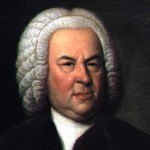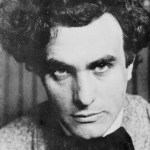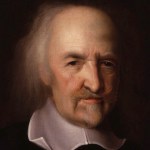Music of the Futurists
Several illuminating thoughts on Thomas Hobbes – a cornerstone of The Loaded Tangent’s debut post – arise from Scott Horton’s August 2009 piece on the 17th Century philosopher for Harper’s. Hobbes was a futurist, of sorts, in the sense that he developed a theory of the future in relation to the past. As expressed in The Elements of Law, Natural and Politic (1640):
“… we make remembrance to be prevision, or conjecture of things to come, or expectation, or presumption of the future.”
Horton, an attorney who specializes in human rights law, points out that former United States V.P. Dick Cheney was especially fond of Hobbes, and suggests that “the [Iraq-bound] Hobbesians of the Bush era” – in their push to shape a post-9/11 future – may have misread their pet philosopher by elevating fear and “unreasoned reflex” above caution and prudence.
Politics aside, Horton also notes that Hobbes was an “intensely musical man” who, according to biographer John Aubrey (1626-1697), was “much addicted to music, and practised on the bass viol (pictured top right)”. Hobbes, we’re told, applied a mathematical perspective to his melody-making and, with this in mind, a swift associative leap takes us to Baroque genius Johann Sebastian Bach (1685-1750, top left), master of formal mathematical patterns and occasional employer of the Fibonacci sequence.
Fast forward to the early 20th Century, where maths, architecture, chaos theory and futurism (and capital ‘F’ Futurism) coalesce in the work of composer Iannis Xenakis (bottom left), who collaborated with Edgard “The Father of Electronic Music” Varèse (top middle) and architect/designer Le Corbusier on the legendary Philips Pavilion at Expo 58, described in this piece by the Guardian’s Tom Service as an “interdisciplinary poly-art orgy” – 350 speakers; 20 amplifiers; one monumental audio-visual head trip.
Here’s what visitors would have heard as they entered the pavilion – Xenakis’s “Concret PH”:
Moving on to modern electronica, San Francisco’s Brendan Angelides (bottom right), aka Eskmo, merits a place in the audio-maths-futurism mix: his video for the digi-organic “Cloudlight” (below, directed by Dugan O’Neal) subtly blurs the line between the biological and the binary (note the tree trunk at 00:30), and sets the natural world against a flickering geometrical tapestry.
Manitoba native, Dan Snaith – better known as Caribou – left Imperial College London in 2005 with a PhD in mathematics. In 2010, he toured with the Russian Futurists, an indie-pop band from Toronto. (For more about the original Russian Futurists, and their 1912 manifesto A Slap in the Face of Public Taste, click here). The video (below, directed by Video Marsh) for Caribou’s “Jamelia” – from 2010’s Swim (bottom middle) – shares with “Cloudlight” a delicate tension between nature and artifice, complexity and order, fluidity and precision.












